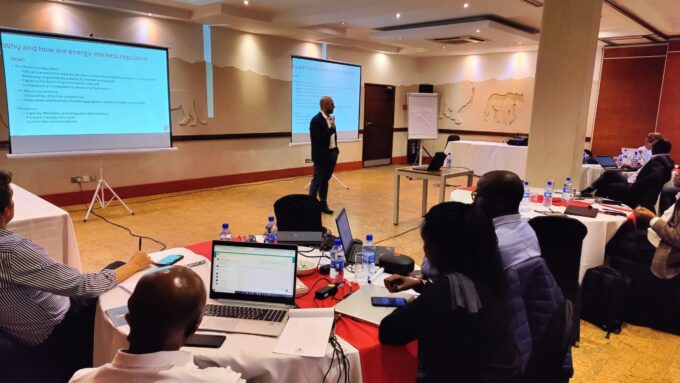In today’s complex organisational environments, effective team leadership is no longer about being constantly available or micromanaging every detail. Instead, it’s about knowing where to invest your energy for maximum impact.
As teams become more autonomous and cross-functional, the role of the leader must adapt—shifting from a hands-on commander to an architect of the conditions that make success possible.
The question facing many team leaders today is not how much effort to put in, but where and when that effort will make the biggest difference. This is where the concept of strategic energy allocation becomes a game-changer.
One model, grounded in decades of team research, offers a clear and actionable guide: the 60-30-10 Rule. It’s a principle that helps leaders make smarter choices about their involvement at different stages of a team’s lifecycle—enhancing performance while avoiding unnecessary overreach.
Understanding the 60-30-10 Rule

The 60-30-10 Rule outlines a strategic distribution of leadership energy across three key phases of a team’s journey:
- 60% of energy should be invested in prework—the design and setup that occurs before the team begins its task.
- 30% should be focused on the launch—setting the team up with clear goals, expectations, and shared understanding.
- 10% should be reserved for coaching—guiding the team through its challenges and maintaining performance over time.
This approach challenges a common misconception that ongoing involvement and oversight are the best ways to lead. In reality, when the early phases are managed effectively, teams require far less day-to-day intervention. Investing energy up front creates the conditions that allow teams to become self-sustaining, adaptive, and high-performing.
Let’s break down each phase in more detail.
60%: Prework – Building the Foundation

The prework phase, often overlooked or rushed, is arguably the most important. It’s the point at which leaders can have the greatest influence—not through charisma or decision-making, but through thoughtful design.
In this stage, developing team leaders are not leading the team yet. Instead, they’re defining the conditions under which the team will operate. This involves:
- Clarifying purpose: What is the team here to do? The goal must be meaningful, aligned with broader organisational priorities, and challenging enough to inspire effort.
- Selecting members: Who is on the team matters deeply. Beyond technical skills, leaders must consider interpersonal dynamics, diversity of thought, and the willingness of individuals to collaborate.
- Defining structure: Roles should be clear. Responsibilities should not overlap unnecessarily. Norms and decision-making processes should be set in advance to reduce confusion later.
- Aligning context: Teams need resources, information, and organisational backing. Without a supportive context—things like recognition systems, access to decision-makers, and tools—the best-designed team will still struggle to execute.
Think of this phase as architectural work. A strong foundation sets the tone for everything that follows. Teams that are hastily thrown together, with unclear mandates or insufficient resources, may struggle for their entire existence—even if they’re full of capable individuals.
30%: Launch – Setting Direction and Building Trust

Once the team is formed, the launch phase becomes critical. This is not just an administrative exercise—it’s a pivotal moment in shaping team culture and aligning expectations.
In this phase, leaders should prioritise:
- Creating shared understanding: Even if individuals know their tasks, do they understand how those tasks fit together? Does everyone agree on what success looks like?
- Facilitating introductions: Especially in newly formed or cross-functional teams, time should be given to relationship-building. Trust doesn’t emerge automatically; it must be nurtured.
- Establishing norms: How will the team communicate? How will decisions be made? What happens when someone disagrees? Getting clear answers early helps avoid problems later.
- Articulating goals: These should be specific, measurable, and tied back to the larger mission defined during the prework phase.
A well-executed launch serves as the ignition for the team’s performance engine. It ensures that members are not only ready to start the work but are aligned in how they’ll work together.
10%: Coaching – Sustaining Momentum
Once the team is up and running, the leader’s role shifts into a support function. If the previous phases were done well, the team should be largely autonomous. That doesn’t mean leaders disappear—it means they intervene strategically.
Coaching efforts might include:
- Monitoring performance trends: Leaders can track whether the team is on pace, whether interpersonal friction is emerging, or if external factors are creating pressure.
- Providing feedback: This includes both reinforcing positive behaviours and helping to correct missteps in real-time.
- Guiding reflection: Encouraging the team to pause periodically, assess what’s working (or not), and adapt accordingly.
- Removing barriers: If the team runs into roadblocks outside its control, leaders can step in to clear the way.
Crucially, this 10% is not about micromanagement. It’s about maintaining a connection to the team without becoming the bottleneck. It’s about equipping the team to handle challenges on their own rather than solving every problem for them.
Implementing the Energy Allocation Model

Transitioning to this model requires a mindset shift. Many leaders, particularly those new to team leadership, feel compelled to stay involved at every step. They equate presence with productivity. But strategic leadership isn’t about being busy—it’s about being effective.
To implement this model, leaders need not only guidance but also support systems that reinforce it. Reflective tools like team diagnostics, structured feedback loops, and development resources tailored to team leaders can be immensely helpful.
For those seeking a more structured path to building effective teams, 6 Team Conditions offers development programmes specifically aimed at helping leaders adopt smarter team leadership practices. These resources are grounded in real research and tailored to the realities of modern, dynamic team environments.
The Payoff: Stronger Teams, Smarter Leadership

The 60-30-10 Rule doesn’t eliminate the need for leadership—it refines it. It helps leaders channel their energy where it matters most and reduces the risk of burnout or misdirected effort. Teams benefit from clarity, structure, and autonomy, while leaders gain the space to think strategically and lead more sustainably.
Perhaps most importantly, this approach allows for leadership to become scalable. When leaders are not tied to daily operations, they can oversee multiple teams, focus on long-term goals, and support broader organisational growth.
In fast-moving organisations, where agility and collaboration are paramount, the ability to set up teams for success from the start—and trust them to carry the mission forward—is invaluable.
Conclusion: Leading by Design, Not Default
Leadership today requires more than motivation and management—it demands intention. The strategic allocation of energy through the 60-30-10 Rule provides a practical, research-backed method for leading teams effectively without becoming overextended or reactive.
By focusing the majority of energy on prework and team setup, dedicating time to a well-planned launch, and maintaining a light but responsive coaching presence, leaders can build teams that are more resilient, more engaged, and more effective.
The result isn’t just better performance—it’s smarter, more sustainable leadership. And in a world where demands on leaders continue to grow, that may be the most valuable return of all.









